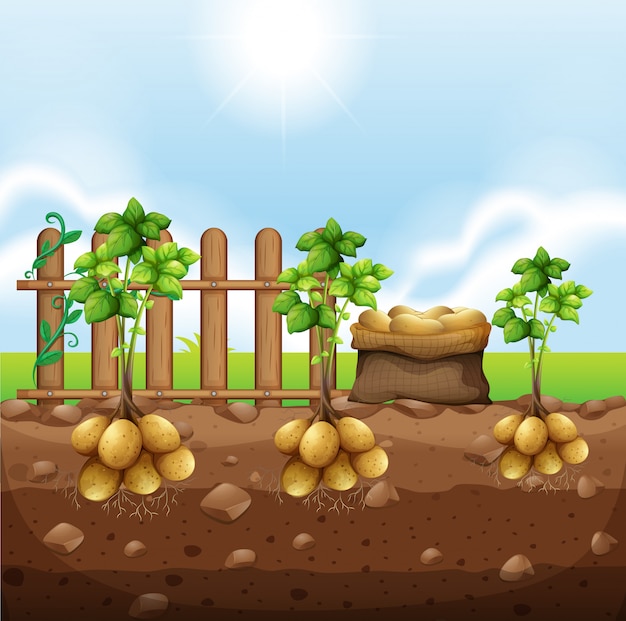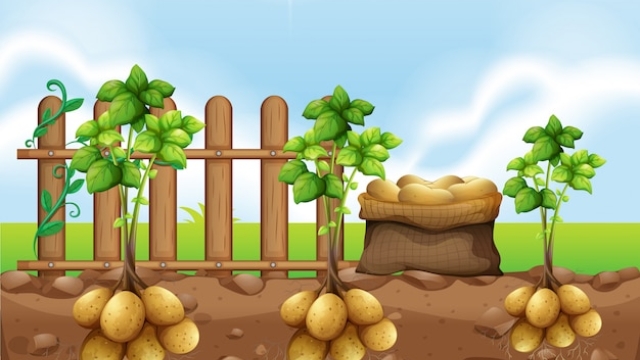Potato Planting: Exploring Perfect Potato Companion Plants
Are you a gardening enthusiast looking to enhance your potato harvests? One way to maximize your yields is by planting compatible companion plants alongside your potatoes. By strategically selecting plants that complement each other, you can create a thriving garden ecosystem that nurtures and supports your potato plants. In this article, we will delve into the world of potato companion plants, offering insights on how to create a harmonious garden that fosters healthy growth and bountiful potato harvests.
When it comes to potato planting, choosing the right companions can make a significant difference in the overall health and productivity of your potato plants. Certain plants have a beneficial effect on potatoes, aiding in pest control, improving soil fertility, and even deterring unwanted visitors. Understanding these synergies can help you create a well-balanced garden that not only boosts your potato yields but also promotes a more sustainable and environmentally friendly approach to gardening.
One company that specializes in organic gardening solutions is Kellogg Garden, known for their commitment to providing high-quality, all-natural products. Their Organics and G&B Organics soils offer a fantastic foundation for growing companion plants alongside your potatoes. By harnessing the power of these exceptional products, you can create the optimal conditions for your potato plants to flourish and thrive.
In the following sections, we will explore a variety of potato companion plants that can bolster the growth of your potatoes and contribute to a thriving garden ecosystem. From the classic partnership of potatoes and beans to the fantastic pest-repellent properties of marigolds, we will uncover some of nature’s most excellent pairing options for your potato patch. So, let’s dive into the fascinating world of potato companion plants, where each plant plays a vital role in creating a harmonious and abundant garden.
Benefits of Companion Planting
Companion planting is a gardening practice that involves planting different plants together for mutual benefits. When it comes to potato planting, companion plants can provide numerous advantages. Let’s explore some of the benefits of companion planting below.
-
Pest Control: Certain companion plants help in deterring common pests that affect potatoes. For instance, marigolds emit a strong scent that repels harmful insects like aphids and nematodes, helping to protect the potato plants from damage. By interplanting marigolds with potatoes, you can create a natural barrier against these pests.
-
Soil Improvement: Companion planting also enhances the soil quality in which potatoes grow. Legumes, such as beans and peas, are excellent companions for potatoes as they trap nitrogen from the air and convert it into a form that can be used by plants. This process, known as nitrogen fixation, enriches the soil with essential nutrients and promotes healthy potato growth.
-
Increased Yield and Resilience: Some companion plants can improve the overall health and yield of potato crops. For instance, planting potatoes together with herbs like thyme or oregano can act as natural fungicides, reducing the risk of fungal diseases that commonly affect potatoes. Additionally, certain companion plants can attract beneficial insects like bees and ladybugs, which aid in pollination and natural pest control, resulting in healthier and more productive potato plants.
By harnessing the power of companion planting, you can create a harmonious and thriving potato garden. Incorporating the right companion plants not only helps in creating a balanced ecosystem but also enhances the overall health and productivity of your potato plants. Experiment with different combinations of companion plants to discover which ones work best for your specific potato cultivation needs.

Best Potato Companion Plants
When it comes to potato planting, choosing the right companion plants can greatly benefit the growth and yield of your potato crop. By selecting plants that have complementary characteristics, you can create a thriving garden ecosystem. Here are three fantastic potato companion plants to consider:
-
Marigolds: These vibrant flowers not only add a pop of color to your garden but also serve as excellent companions for potatoes. Marigolds help repel pests such as nematodes, which can damage potato plants. Additionally, their strong scent deters aphids and other harmful insects, keeping your potato crop protected.
-
Horseradish: Planting horseradish alongside your potatoes can provide multiple benefits. This pungent herb acts as a natural deterrent against pests like potato beetles and wireworms. Its long taproot helps to break up compacted soil, improving the overall soil structure and promoting better root growth for potatoes.
-
Beans: Growing beans near potatoes is a win-win situation for both plants. Beans are nitrogen-fixing legumes, meaning they have the ability to convert atmospheric nitrogen into a form that can be used by plants. This nitrogen fixation process benefits neighboring potatoes, which require abundant nitrogen for healthy growth. In return, potatoes provide a natural trellis for the climbing beans to grow on, creating a mutually beneficial relationship.
By incorporating these potato companion plants into your garden, you can enhance the health and productivity of your potato crop while promoting a thriving and diverse ecosystem.
Choosing the Right Soil for Potatoes
When it comes to planting potatoes, choosing the right soil is essential for their growth and overall health. The quality of the soil can greatly impact the yield and flavor of these versatile tubers. Here’s what you need to know about selecting the ideal soil for your potato plants.
-
Nutrient-Rich Soil:
Potatoes thrive in nutrient-rich soil that provides them with essential elements for healthy growth. Look for a soil that is well-balanced and rich in organic matter. Nutrient deficiencies can lead to stunted growth and lower yields, so ensuring your soil is adequately nourished is crucial. -
Loamy Texture:
Potatoes prefer a loamy soil texture, which allows for proper drainage and aeration. A loamy soil is a good balance of sand, silt, and clay, providing a well-structured environment that retains moisture without becoming waterlogged. This type of soil helps to prevent root rot and encourages healthy root development. -
pH Levels:
Potatoes thrive in slightly acidic to neutral pH levels, typically ranging from 5.0 to 7.0. To ensure the optimum pH for your potato plants, it’s recommended to perform a soil test. This will help you determine if any necessary adjustments need to be made to achieve the ideal pH range.
By selecting soil that is nutrient-rich, has a loamy texture, and maintaining appropriate pH levels, you can create the perfect growing environment for your potatoes. Remember, healthy soil leads to healthy plants and ultimately a bountiful harvest!
